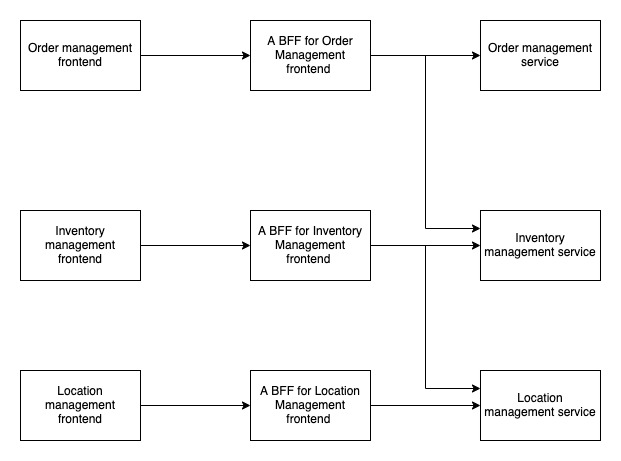Delving into Microfrontends - Chapter I
Microfrontends - A chapter wise breakdown

Chapter I - Entering the Microfrontends world
A new fancy term has started doing the rounds in the industry . Is it a framework ? A technique. ? A process ? This post is the first in a series dedicated to delving into the basics of what Microfrontends signifies and a simple example of getting it up and running.
We have all heard of Microservices being a popular architectural choice for the services world. It allows isolating complexity and enables autonomous teams handling domain specific responsibilities . A classic example is Uber , which popularized the microservices architecture style with its’ segregation of services each for location management , session management, ride management , etc.
A practical / simple microservices architecture would look like this

This means that though the services have segregated responsibility with their own paramaters for handling scale and load, the client or the frontend is still sitting on a monolith which involves combining data from all the microservices and showing it to the user. Which also means that business logic cutting across complex domains, needs to be handled by the same frontend monolith .
While this has been the status quo , and there have been some design principles which have certainly made things simpler ( like Composition ), isolating complexity on the frontend has still evaded us. However, there seems to be a new architectural style emerging for the frontend / client application to solve this problem . Enter Microfrontends !
Microfrontends does for the frontend , what Microservices does for the backend. Yes that’s how simple it really is. Microfrontends is a means to to run multiple applications on the same webpage . Redefening the previous image with Microfrontends would make it look something like this.

As you can see, while Microservices enabled our backend to be split horizontally, our frontend was still a single block in the diagram. With Microfrontends, the frontend has been split with the same boundaries as the backend. Notice how the Backend for frontends [BFF] for each frontend application can still communicate with multiple services to gather the data required. For example, Order page might require details about the inventory available .
The first question that comes to our mind is how these Microfrontends communicate and coexist on the same page. This again can be mapped to the corresponding communication pattern followed by Microservices .
Microservices communicate among themselves through APIs . An API is an interface provided by a service / function / or any running program which allows outside services / functions to access it.
Similarly, Microfrontends communicate amongst themselves using APIs . Now you might ask , in Microservices , the APIs are exposed over a communication channel ( or via URI ) and mostly ( not always ) accessed over http/s, but what is the communication channel with Microfrontends, since the frontends already coexist on the same webpage . Well , there are many answers to this . My personal favourite is the JS window object.
More about the window object in Chapter II when we talk about a practical example of rendering multiple micro-apps on the same webpage.
Chapter I was mainly intended to enter into the world of Microfrontends and understand what the term signifies. In Chapter II , we will cover a practical example and see how we can render multiple applications ( build in ReactJS and VueJS ) on the same webpage.